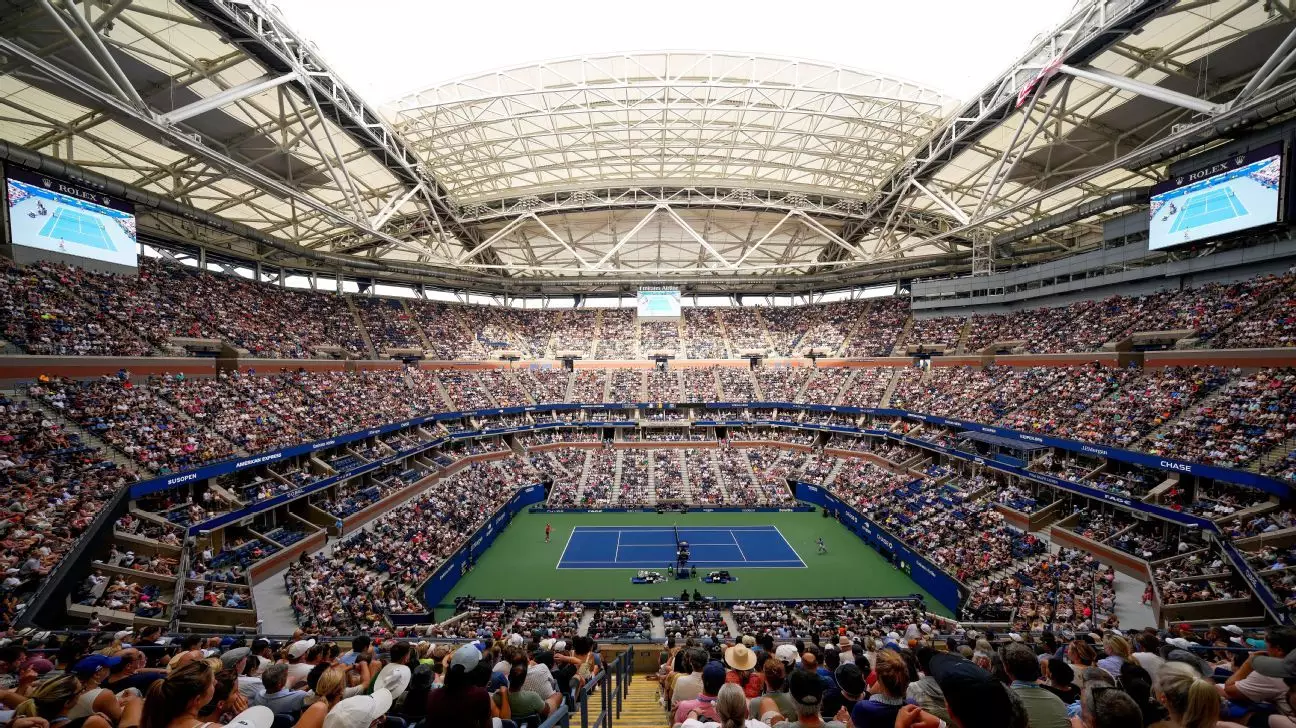The recent announcement regarding the $800 million renovation of Arthur Ashe Stadium is a watershed moment for the U.S. Tennis Association (USTA) and the entire world of professional tennis. This undertaking, heralded as the largest singular investment in any Grand Slam tournament, signals a profound commitment to maintaining and elevating the prestige of the US Open. By undertaking this colossal project independently—without any financial backing from city authorities—the USTA showcases its determination to enhance the fan experience and offer world-class facilities to players, albeit amidst ongoing discussions regarding player compensation and tournament revenue.
The Financial Landscape of Grand Slam Tournaments
The backdrop to this ambitious renovation is shrouded in controversy. As highlighted by a class-action antitrust lawsuit spearheaded by a group of players, including luminaries like Novak Djokovic, the financial model of tennis tournaments is under fire. The fact that these major tournaments collectively earned over $1.5 billion in 2024 while allocating a mere 10% to 20% of their revenue to players raises crucial questions about equity in the sport. The stark imbalance between profit margins and player compensation reflects a system increasingly at odds with the very athletes who draw in fans and generate those revenues.
Players Demand Change
In a striking display of unity, elite players, including tennis stars Jannik Sinner, Aryna Sabalenka, and Coco Gauff, have come together to demand not just a fairer distribution of prize money but also a meaningful voice in decisions that profoundly affect their careers. Their open letter to tournament heads is indicative of a shifting paradigm in professional tennis where athletes are no longer passive recipients of tournament management decisions. This push for greater agency underscores an evolving cultural landscape in which player rights are increasingly prioritized, compelling governing bodies to reassess their operational philosophies.
Innovative Enhancements for a Modern Experience
Beyond the contentious financial discourse, the planned enhancements to the Billie Jean King National Tennis Center promise to redefine the way fans and players experience the US Open. The introduction of a state-of-the-art player performance center illustrates a forward-thinking approach that prioritizes players’ needs, providing them with a space that supports optimal performance. Additionally, by augmenting Ashe’s courtside seating from 3,000 to 5,000, while preserving the stadium’s overall capacity, the USTA demonstrates a keen understanding of enhancing spectator engagement without compromising the intimacy that fans have come to adore in this iconic venue.
Available Amenities and Modern Design
The revitalization does not stop at the court level. The envisioned upgrades include a grand entrance, new luxury suite levels, and enhanced food and beverage offerings, all catered to enrich the visitor experience. With more spacious concourses and improved restroom facilities, the USTA is clearly attentive to the logistical challenges that often accompany large sporting events. Furthermore, the planned addition of escalators and elevators acknowledges the necessity of accessibility and convenience in modern sports venues.
Overall, while the USTA’s financial prowess is commendable, there remains a palpable need for the organization to acknowledge and embrace the concerns of professional athletes as crucial stakeholders. The construction of a more vibrant and equitable tennis ecosystem could solidify tennis’s legacy and ensure that it remains a beloved sport for generations to come.


Leave a Reply